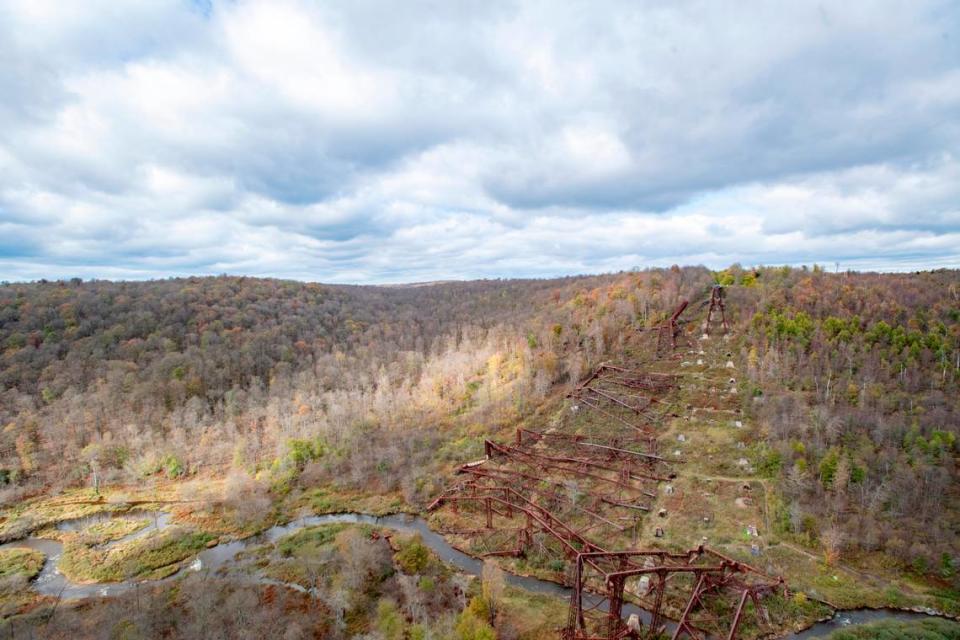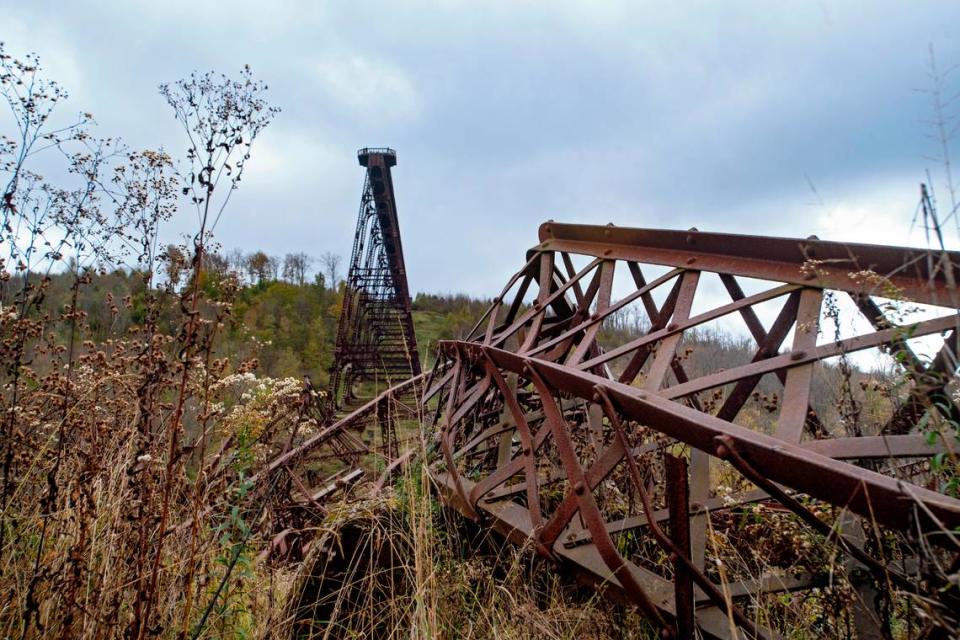Once called the 8th Wonder of the World, you can walk onto this historic PA bridge
Once billed as the Eighth Wonder of the World, a historic Pennsylvania rail bridge has been converted into a pedestrian walkway and viewing platform for the state park below.
The Kinzua Bridge, named after the valley it crosses, was commissioned in 1882 by the New York, Lake Erie and Western Railway to transport coal. It was built by Phoenix Iron Works, with 1,408 tons of wrought iron and a crew of 40 men. The project took only 94 days to complete and was the largest bridge ever attempted at the time.
Holly Dzemyan, environmental educator at Kinzua Bridge State Park in McKean County, said the bridge has been a beloved attraction since its start.
“When it was finished in 1882, it was the tallest and longest railroad bridge in the entire world,” Dzemyan said. “People called it an engineering marvel. Some people called this the Eighth Wonder of the World.”
Only 18 years after the original bridge’s completion, construction began again, replacing the wrought iron with steel to accommodate heavier and larger freight trains. The bridge continued as a critical passageway for coal transportation until the 1960s when the state of Pennsylvania purchased the bridge and surrounding land for $50,000. In 1970, the Kinzua Bridge State Park opened to the public with scenic train rides across the bridge.

“People came up here because at that time to walk out there on the bridge was astounding,” Dzemyan said. “The middle section of the bridge was over 301 feet high and the wind coming down through that valley would hit people and it gave them the feeling of flying.”
After high winds and rusting steel caused structural concerns, the bridge was closed in 2002 to trains and pedestrians. Restoration of the bridge started in 2003 but was halted when a tornado hit in July of that year, tearing 11 of the structural support columns and collapsing part of the bridge onto the valley floor.
Now the remains of the bridge sit in the 339-acre park with a pedestrian skywalk and 225-foot high observation deck. The walkway is built on six of the restored towers, 600 feet out onto the bridge.
Although the skywalk and bridge are the main features, hiking trails crisscross the valley and there is a visitors center with hands-on exhibitions about the park and its history.
The park is open year-round but days and hours vary by season. Visitors should check the park’s website for more information for fall and winter hours. From mid-March to early November, the park is open from 8 a.m. to 6 p.m. seven days a week. Dzemyan said visitors should check forecasts before a visit to ensure the skywalk will be open.
The skywalk and visitor center are ADA and wheelchair accessible, with the entrance to the skywalk located just outside the visitor center. Dzemyan suggests visitors bring comfortable shoes and clothing and check weather conditions before arriving as the skywalk has strong winds.
What to bring: Comfortable shoes and clothing for hiking on trails
What to do: The Zippo Museum is just up the road in Bradford
How to get there: From State College take U.S. Route 322 west toward Philipsburg then take state Route 153 toward Penfield onto U.S. Route 219



